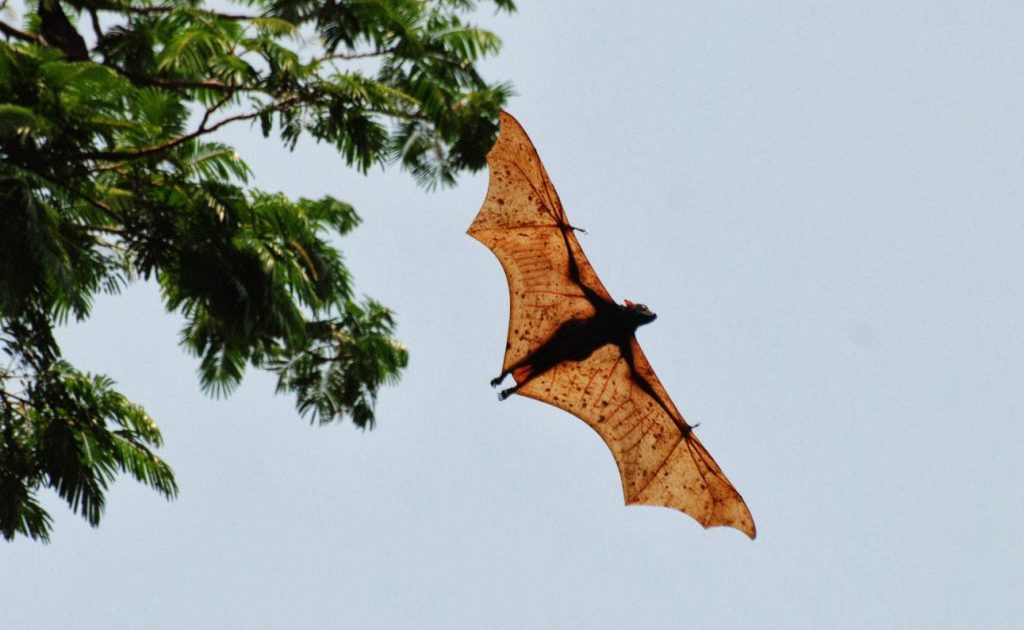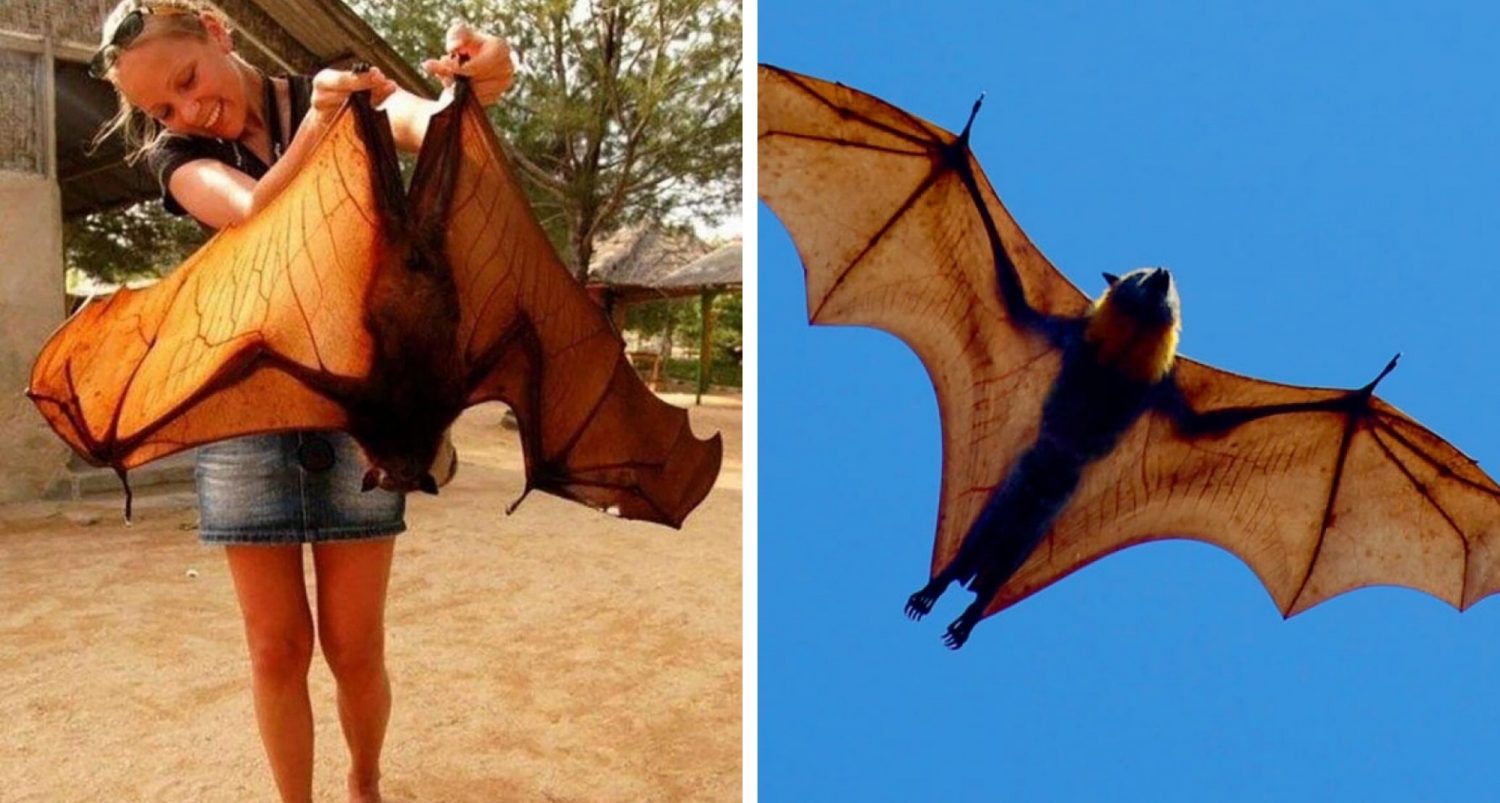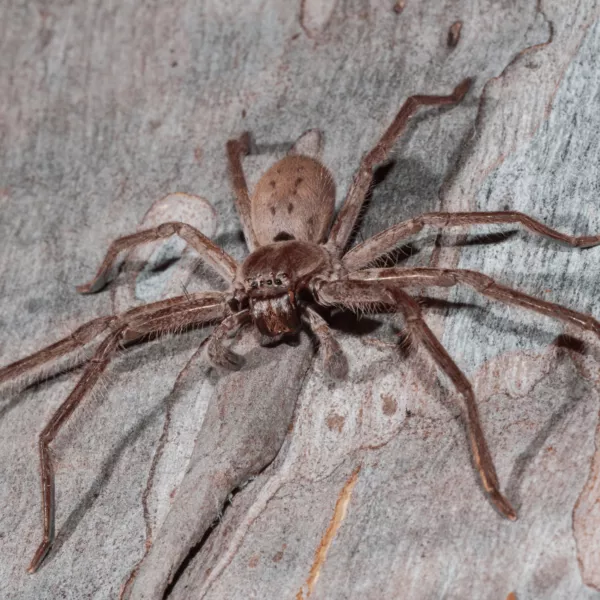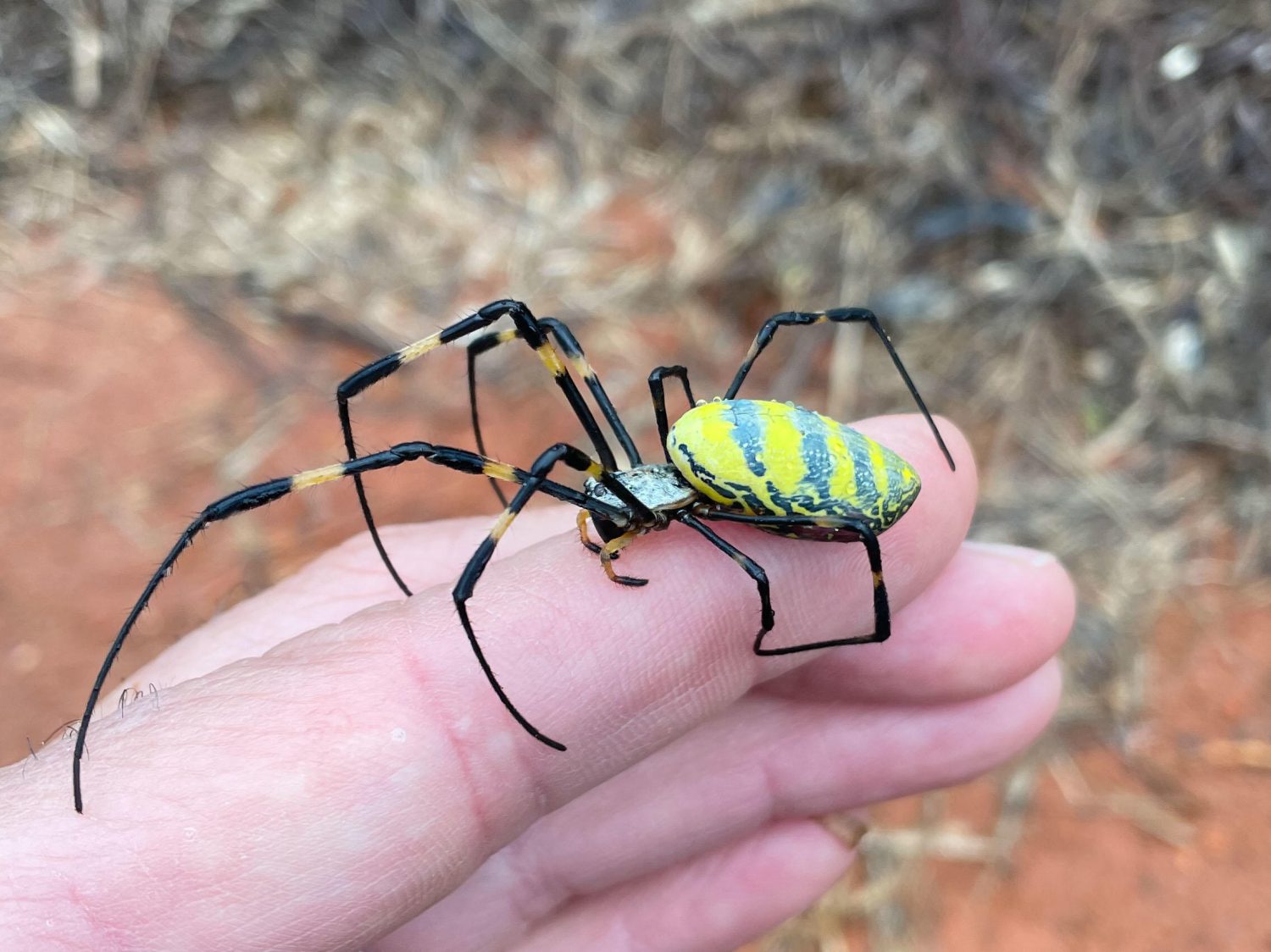Bats are not uncommon throughout the world. However, only some parts of our planet are lucky enough to have the adorable giant golden-crowned flying foxes.
Acedoron jubatos, or the giant golden-crowned flying fox, is the largest bat species in the world. It belongs to the family of megabats, and it is found in Africa, Asia, India, and Oceania. Its distinctive name came from its appearance characteristics – a large tuft of golden fur on top of this bat's head, which looks like a crown.
Numerous times in the past years, awe-inspiring pictures of the flying fox appeared on social media. And no wonder, as this bat species has a wingspan the size of an adult human! But don't be alarmed. The giant golden-crowned flying fox is as gentle as they come.
Feeding strictly on plant leaves and fruit, this megabat is a peaceful animal. Despite bats being portrayed as blood-sucking, vampiric creatures of the night, the flying fox is far from it. Not only is it a frugivore, but it is also active throughout the day, unlike its smaller cousins.
What Is A Giant Golden-crowned Flying Fox?

The golden-crowned flying fox is a fruit-eating megabat. While many megabats are found in Asia and Africa, this species is found only in the Philippines. It is the largest bat species in the world.
The genus to which it belongs, Acerodon, includes four other megabat species found in Southeast Asia. The giant golden-crowned flying fox is the only one of this genus whose range encompasses a large part of the Philippines.
This species of megabat has large, bright eyes and simple external features. Its ears are small with continuous margins. They are as long as the bat's muzzle and pointed. The skull of the giant golden-crowned flying fox has a strong, incomplete postorbital process. Its teeth are sharp and pointed. The last two molars are flat and used to chew the fruit and plants that they eat thoroughly.
The primary distinguishing feature of the giant golden-crowned flying fox is its fur. The fur is thin on the bat's throat and ears and completely absent on the wing membranes. It is short and smooth on the rest of its body.
The color variation is considerable. The typical color scheme for this giant bat is dark brown or complete black on the forehead and sides of the head. It is red to reddish-brown on the bat's shoulders and dark brown or black on its lower back and belly. Giant golden-crowned bats have cream or yellow patches of fur on the top of their heads, followed by a narrow line of orange at the back of their necks.
Unlike most of their cousins, the variation of colors for these megabats does not depend on their sex, age, or locality.
How Big Is The Giant Golden-crowned Flying Fox?

Very big! This mega bat is one of the world's largest bat species and among the heaviest of all bat species. When hanging on a branch, a giant golden-crowned flying fox's height is between 7 and 11.4 inches long. You might think that this is small, but it is far from it compared to their bat cousins. The only other species that could match their height are the Indian flying foxes.
Some have referred to the giant golden-crowned flying foxes as human-sized bats. While their height matches only a small child, their wingspan is indeed the size of a human. The golden-crowned flying fox wingspan can get up to 5.5 feet.

Just take a look at the giant golden-crowned flying fox size comparison!
With such a large wingspan, they still weigh only up to 3.1 lb. This is due to their wings weighing next to nothing, as they are made out of almost translucent membrane without any fur.
The Behavior And Hunting Habits Of The Human-sized Bat

The giant golden-crowned flying foxes live in colonies of up to 10,000 individuals. They are friendly and like to roost with other bat species, especially other flying foxes to which they are similar. However, they are typically outnumbered by these other species and make less than 20% of the roost population.
There used to be mixed colonies of 100,000 to even 150,000 individual bats in the early 1920s. However, that number has dropped to at most 30,000 individuals. Most of the bats in these colonies emerge from the roost at sunset, then fly looking for food and return before sunrise.
The giant golden-crowned flying foxes are different in this matter because their activities are not solely nocturnal. They tend to live alongside rivers and are known to go out seeking food throughout the day.
The flying foxes, among which are also our golden-crowned bats, are frugivores. This means that they eat the fruit and leaves of the fruit-bearing plants solely. Their favorite appears to be figs. They are a dietary stable, according to the seeds found in their droppings. Giant golden-crowned flying foxes also like eating fruits from other ficus species.
These fruit bats are picky, so they do not eat every species of fig. Their dietary range is narrower than that of the other bat species, even those that live in the same area. The figs are also only found in mature lowland forests, which makes the golden-crowned flying foxes forest obligates.
Besides figs, they also consume leaves. The way they do this is by crushing them and swallowing the liquid content. How much of their diet is composed of leaves is unknown.
One of the notable things about the giant golden-crowned flying fox's habitat is that they live along the waterways. They supposedly do this in order to be able to find food to eat at all times of the year. Figs and plants of their choice are always found along the rivers. This way, the fruit bats can fly along the river day and night.
Unfortunately, the reproduction and behavior of this species are poorly known. Even in large colonies, the golden-crowned flying foxes are isolated, and there haven't been exceptional chances to study this species yet. It is known that their flying fox cousins exhibit a polygynous mating system. This means that the male bats mate with many female bats during mating season.
The giant golden-crowned flying foxes are thought to have two breeding seasons per year. The female flying foxes produce their offspring only once per year. The duration of the pregnancy of these bats and the exact time of the breeding season is not yet known, though females generally give birth to a live young in spring.
April to June, young giant golden-crowned flying foxes are born, clinging to their mothers with their claws. The mother will care about its young, lactating, and fanning the pup with her wings to keep it cool. The flying foxes reach maturity at age 2 and start producing the young.
There are no known predators of the giant golden-crowned flying foxes. However, their numbers are sadly dwindling due to their changing habitat.
Is This Gentle Giant Endangered?

With their frugivorous diet, these animals are important seed dispersers of many fruiting plants. This makes the giant golden-crowned flying foxes key pollinators of their range, benefiting the ecosystem of their habitat.
Sadly, due to deforestation and poaching for their meat, these adorable, gentle giants are now an endangered species. At this time, there are only 3 known roosting sites where these bats are protected from hunting. They are safe when they are in their roost, but when the giant bats go outside looking for food, they become victims of hunters.
National and international laws make the hunting and trade of the giant golden-crowned flying fox illegal. However, they are inadequately enforced. The species are still frequently hunted. The flying foxes are often affected by human disturbance due to the tourists who intentionally disturb them during the day and the hunters that prey on the bats when they leave their roost.
It has gotten to the point that the giant golden-crowned flying fox is almost extinct. It has, sadly, disappeared from many smaller islands and some larger islands in the Philippines – Panay and Cebu. When their forests are cut down, the bats are forced to live in smaller habitats. And when the fruits are taken by humans, the flying foxes will have no food, and they may even die of starvation.
Currently, there are organizations working hard to make sure the giant golden-crowned flying foxes do not go extinct. The Subic Bay region of the Philippines is now a base for research on these bat species, focusing on their conservation.
Fun Facts About The Giant Golden-crowned Flying Fox

This fruit bat is the largest bat species in the world.
It is a frugivorous species, which means that it strictly eats fruit.
The scientific name of this mega bat is Pteropus jubatus.
Giant golden-crowned flying fox's wingspan is 5.5 feet in length.
It lives along rivers and, unlike other bat species, it is active throughout the day.



